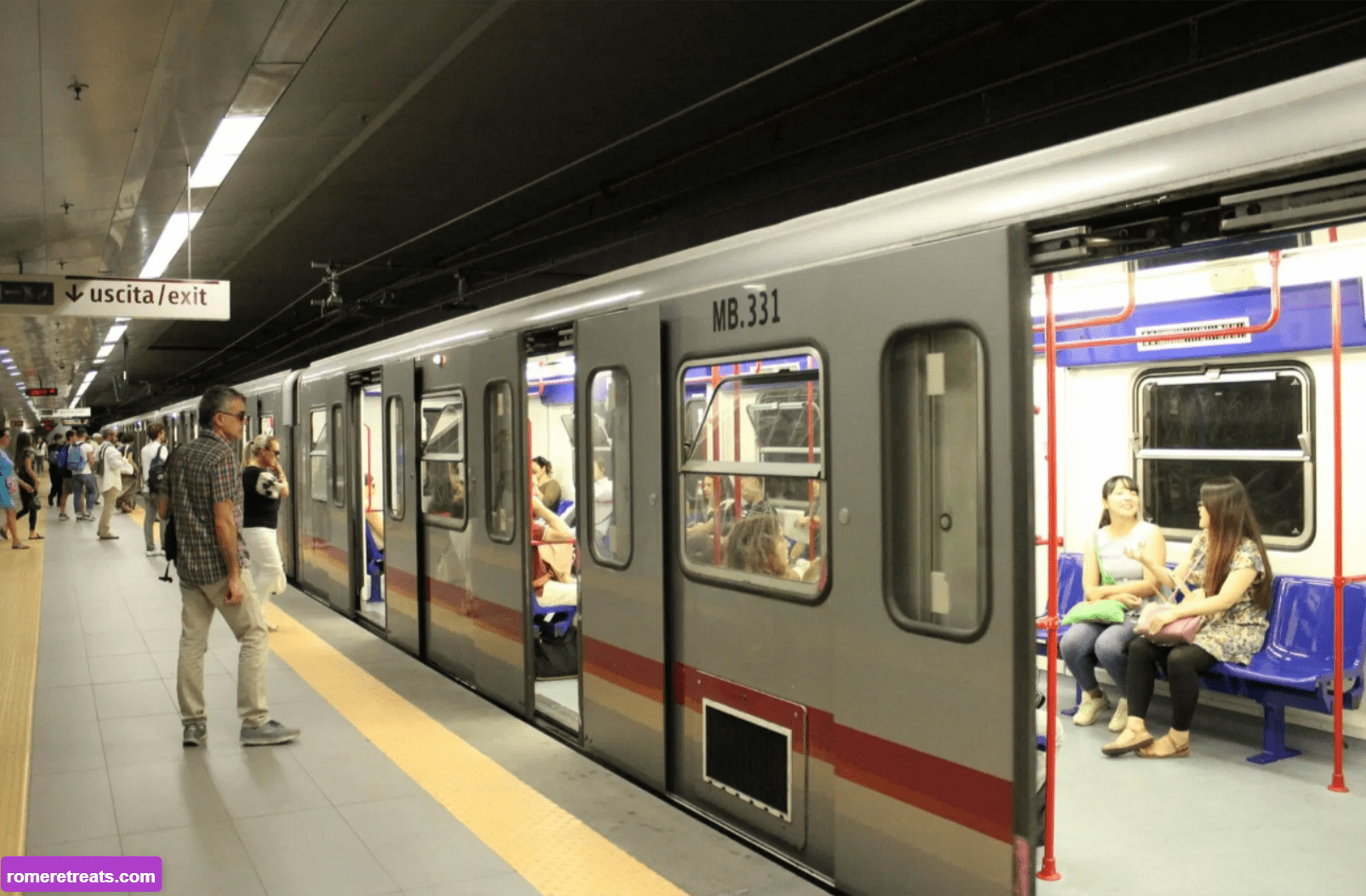I’m often asked what’s the best way to get around Rome or How to get around rome. If you’re spending a short vacation in the city center, walking is undoubtedly one of the best and most favored methods to explore Rome.
However, the answer to this popular question isn’t straightforward. Rome is an expansive city, so the best way to get around largely depends on where you’re staying and your intended destinations.
Rome offers a variety of transportation options. In this comprehensive article, I’ll guide you on how to navigate Rome and which modes of transport to choose, whether you’re staying in the city center or elsewhere, depending on where you need to go.
Are you ready? Keep reading to plan your smoothest and most enjoyable trip to Rome!
How to get around Rome – Full guide to navigating the city
On foot
Walking is my favorite, and certainly one of the best ways to explore Rome, especially if you’ve booked accommodation in the city center, where you’ll spend most of your holiday. Rome’s city center is highly walkable. Although large and composed of different neighborhoods, walking through Rome’s central districts feels like visiting an open-air museum—minus the admission fee.
Of course, walking from the Vatican to the Capitoline Museums is not a short stroll, but with proper planning and daily itineraries, you can cover most of your holiday on foot. In fact, if you only have one day in Rome and it’s your first visit, I suggest spending that time in the city center, where there’s plenty to see and do.
For longer stays, the best approach is to plan daily itineraries focusing on specific areas so that each day, you can explore a compact area and walk between landmarks. If your accommodation is far from the city center, you can use public transport to reach downtown in the morning and spend the rest of your day walking around.
By bus
Rome’s buses are primarily operated by two companies: ATAC and TPL. ATAC is the public transport company of Rome’s municipality and operates most buses, especially in the city center. Buses are convenient when there’s no metro or train available for your destination, but they often take longer.
Unlike the metro and trains, buses mainly travel on general roads and often get stuck in traffic. Although there are dedicated bus and taxi lanes throughout Rome, they aren’t everywhere, so buses aren’t always faster than cars and are still subject to traffic jams.
If you choose to use Rome’s public transport, you can purchase single tickets valid for 100 minutes, as well as daily, weekly, or even monthly passes. A single ticket costs €1.50 and allows one train ride, one metro ride, and unlimited bus rides within its validity period.
By metro
Rome’s metro is one of the best and fastest ways to get around the city. Unfortunately, the metro network isn’t very extensive. Currently, there are two main lines, A and B, with a third line, C, gradually expanding with new stations.
While this expansion greatly increases the metro’s reach, it’s still quite limited considering the size of Rome. To put it in perspective, Rome’s metro system is nowhere near as extensive as those in cities like London or Shanghai.
If your route includes metro stations, this is definitely the way to get around Rome, especially if you’re short on time and want to avoid traffic. However, unless necessary, I recommend avoiding rush hours in the morning and afternoon, as trains can become overcrowded and uncomfortable.
By tram
Taking the tram is also a good way to navigate Rome. Similar to buses, trams operate at street level but have dedicated stops and platforms. Trams are generally faster than buses because they travel in designated lanes, and while cars may occasionally cross these lanes, trams have the right of way and rarely stop for anything.
Typically, after the train and metro, the tram is my go-to mode of transportation in Rome, as it’s less likely to get stuck in traffic compared to buses. Some of the trams you’ll find in the city center include No. 8 from Casaletto to Piazza Venezia, passing through Trastevere and Largo Argentina, and No. 19, which connects the Vatican and Prati areas to Villa Borghese, Nomentano, and Esquilino neighborhoods.
By train
The train is another of my favorite ways to get around Rome. Perhaps it’s because I live near a train station, making it easy to reach just about anywhere. The rail line near my neighborhood connects with metro lines A and B, as well as major stations like Tiburtina, Ostiense, Trastevere, and San Pietro.
Rome’s urban railway system is excellent, with a vast network connecting the entire city to its suburbs. Living near the A90 highway exit allows me to reach San Pietro station in 20 minutes by train, with only one transfer to reach Termini station, and in about 30 minutes, I can be at Trastevere station.
By taxi
If you need to get around Rome outside the city center, at night, or to areas not well-served by public transport, you can call a taxi. Taxis in Rome are abundant, either stationed at specific locations or cruising around the city.
If you see a taxi, you can wave it down, but make sure it’s not already occupied. If the light on top is on, it’s either on a call or already has passengers.
You can also book a taxi in Rome by calling the local number 063570, and even schedule a ride in advance, specifying the time and place.
By driving
I rarely recommend driving in Rome due to the intense traffic, difficulty finding parking, and the ZTL (limited traffic zone) that restricts access to the city center, making it challenging if you plan to stay there.
However, if Rome is a stop on your longer Italy trip and you’ve rented a car, there are a few things to consider. First, it depends on how many days you’ll spend in Rome. If it’s only 1 or 2 days, you can park your car and use public transport to get around the city.
On the other hand, if you’re staying in Rome for 4 days or even a week, you might want to consider returning the car and renting it again when you’re ready to leave for your next destination in Italy.
Best way to get around Rome – FAQ
What is the cheapest mode of transport in Rome?
The cheapest mode of transport in Rome is the train, with a single ticket from Trenitalia costing 1€, compared to the €1.50 ATAC tickets. However, if you purchase a Trenitalia ticket, it only covers the train ride, whereas an ATAC ticket, costing €0.50 more, includes one metro ride, unlimited bus and tram rides, and one train ride within its validity.
So, if you plan to use the bus or metro after your train ride, it’s better to buy an ATAC ticket to avoid paying more. Note that Trenitalia fares aren’t valid for buses and the metro.
How do most people get around in Rome?
Romans drive a lot. In general, Italians love to travel by car. In Rome, however, many also use public transport, especially when heading to central neighborhoods with the ZTL or during rush hour, when traffic can become particularly congested.
Often, residents from surrounding towns or suburbs drive to the nearest train station, park their cars, and then use public transport to get around the city. This approach is much more practical than driving everywhere, especially on weekdays when traffic can be intense.
Does Rome have Uber?
Rome does have Uber, but it’s not the affordable service you might know from the U.S. In Italy, Uber is only allowed to operate its luxury services like UberBlack, UberLux, and UberVan. The popular UberPop option, where any private driver can provide rides without government-issued authorization, is not permitted in Italy.









